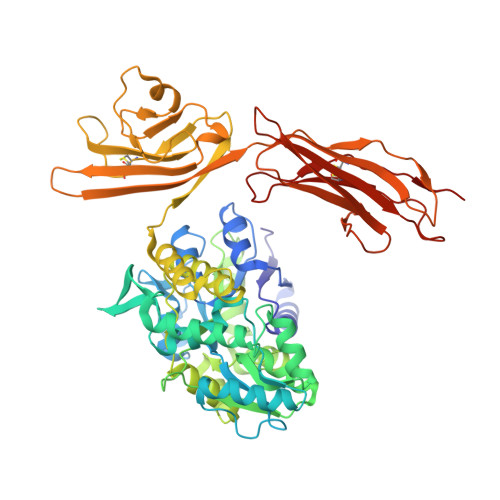The 1.5 A crystal structure of human receptor for advanced glycation endproducts (RAGE) ectodomains reveals unique features determining ligand binding.
Park, H., Boyington, J.C.(2010) J Biol Chem 285: 40762-40770
- PubMed: 20943659
- DOI: https://doi.org/10.1074/jbc.M110.169276
- Primary Citation of Related Structures:
3O3U - PubMed Abstract:
Interaction of the pattern recognition receptor, RAGE with key ligands such as advanced glycation end products (AGE), S100 proteins, amyloid β, and HMGB1 has been linked to diabetic complications, inflammatory and neurodegenerative disorders, and cancer. To help answer the question of how a single receptor can recognize and respond to a diverse set of ligands we have investigated the structure and binding properties of the first two extracellular domains of human RAGE, which are implicated in various ligand binding and subsequent signaling events. The 1.5-Å crystal structure reveals an elongated molecule with a large basic patch and a large hydrophobic patch, both highly conserved. Isothermal titration calorimetry (ITC) and deletion experiments indicate S100B recognition by RAGE is an entropically driven process involving hydrophobic interaction that is dependent on Ca(2+) and on residues in the C'D loop (residues 54-67) of domain 1. In contrast, competition experiments using gel shift assays suggest that RAGE interaction with AGE is driven by the recognition of negative charges on AGE-proteins. We also demonstrate that RAGE can bind to dsDNA and dsRNA. These findings reveal versatile structural features of RAGE that help explain its ability to recognize of multiple ligands.
Organizational Affiliation:
Laboratory of Structural Biology, NIEHS, National Institutes of Health, Research Triangle Park, North Carolina 27709, USA. hajpark@scripps.edu

















